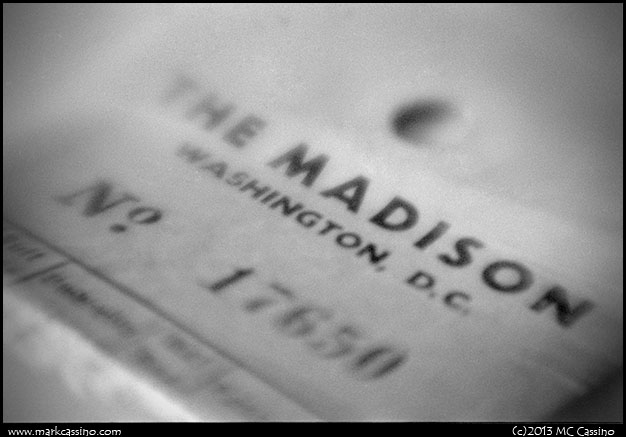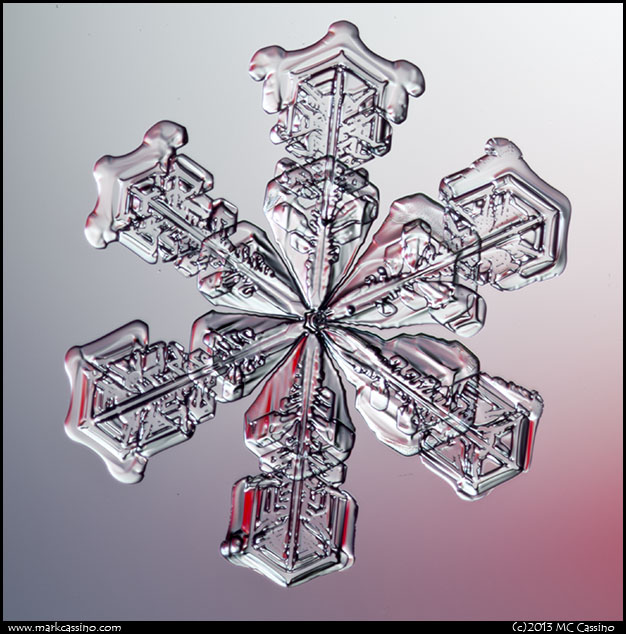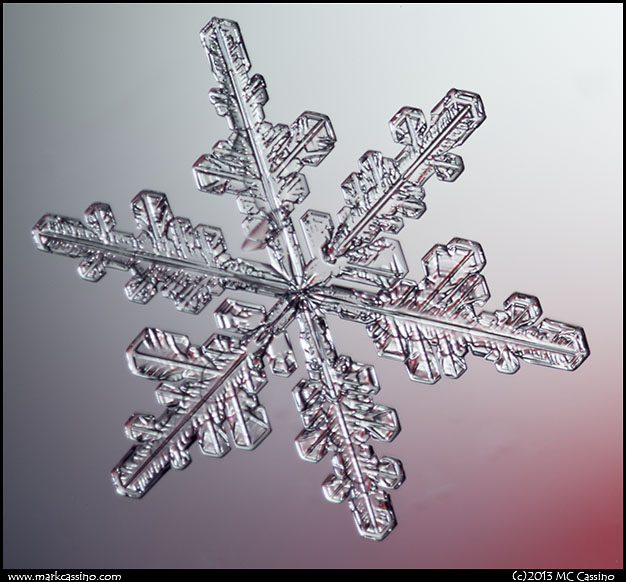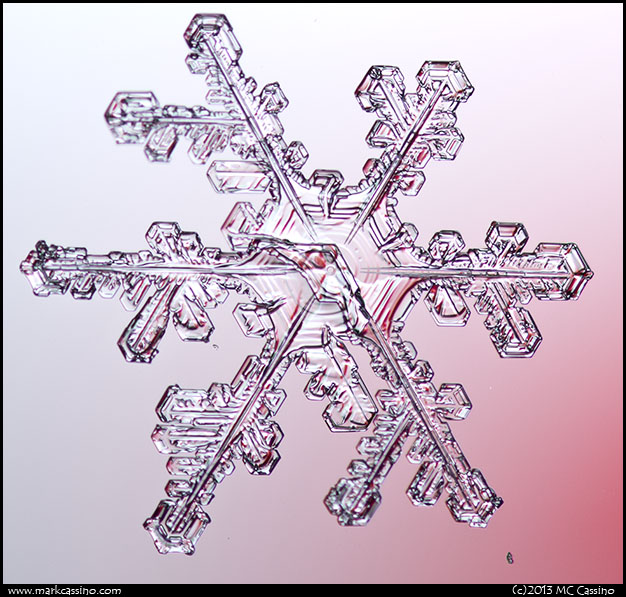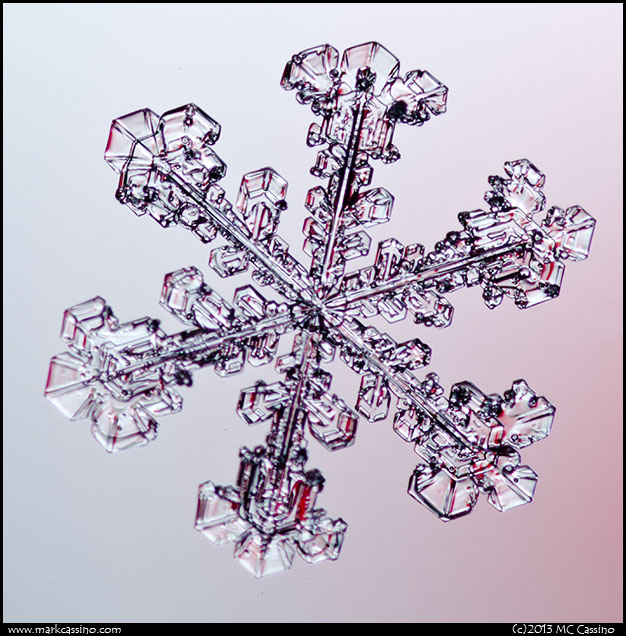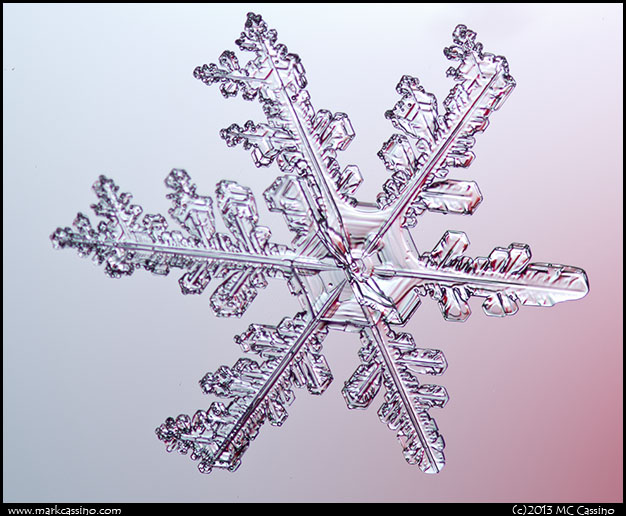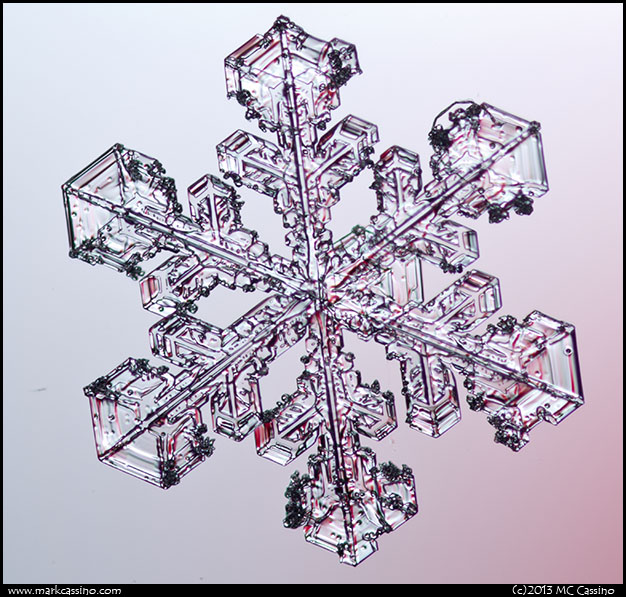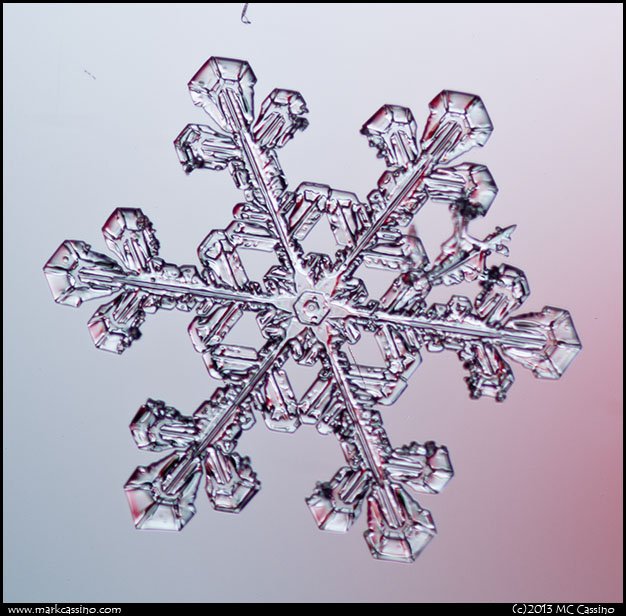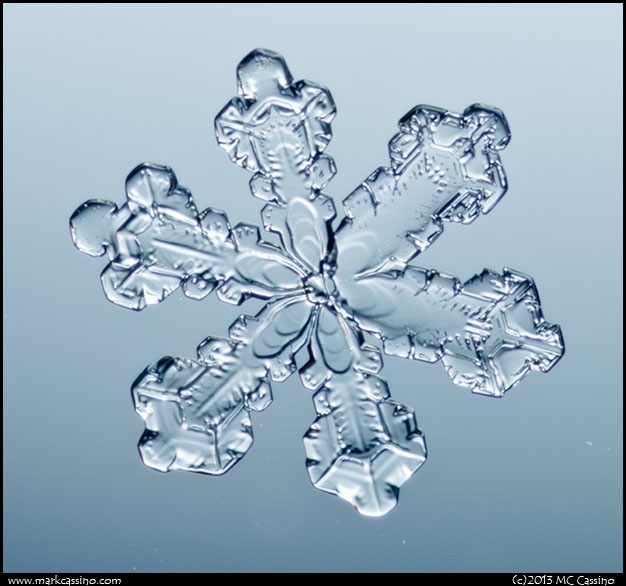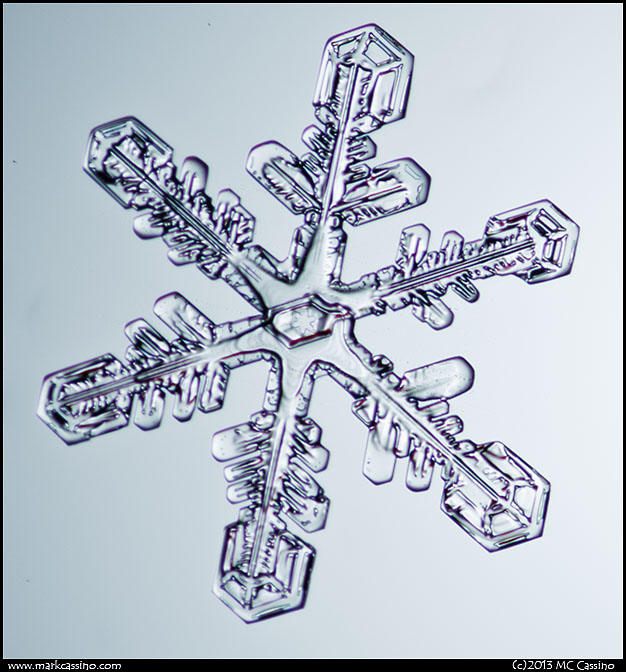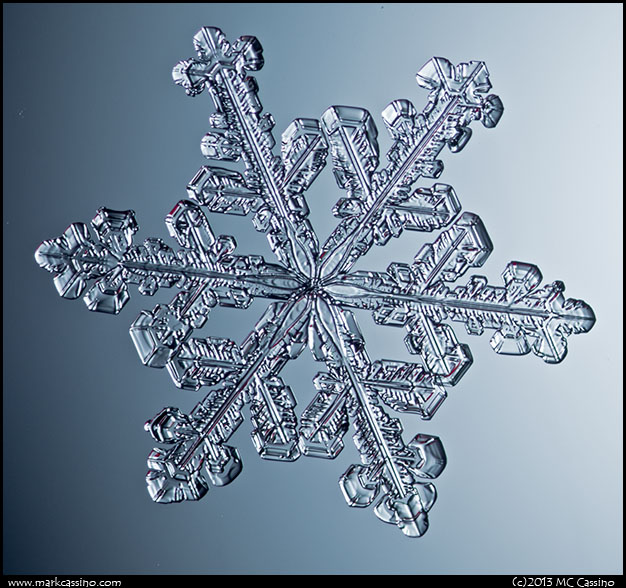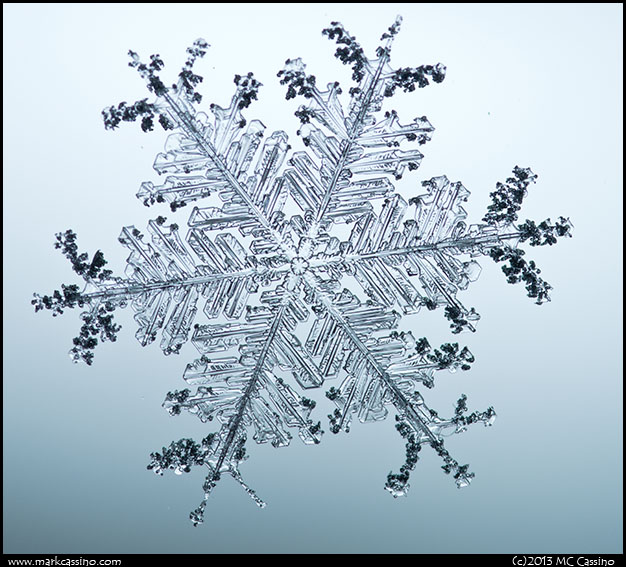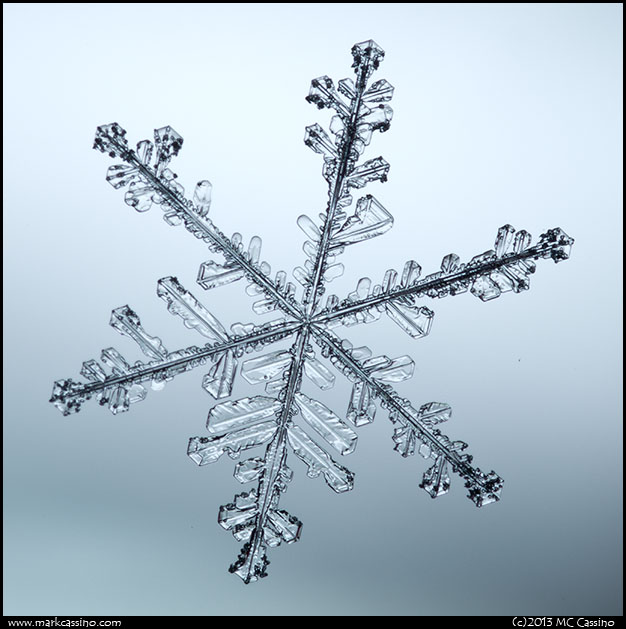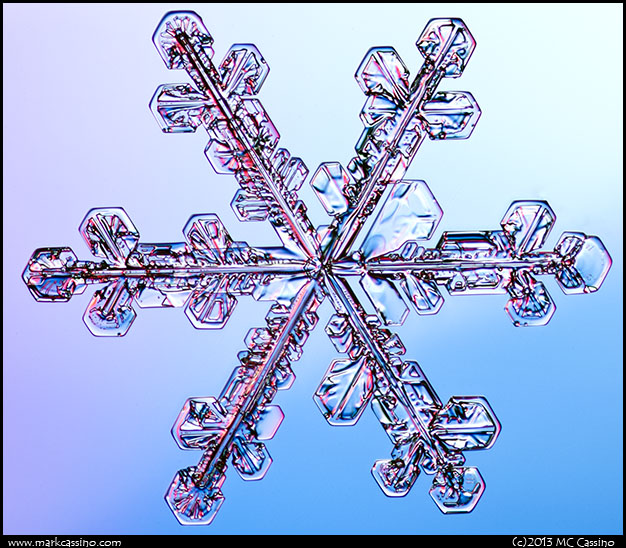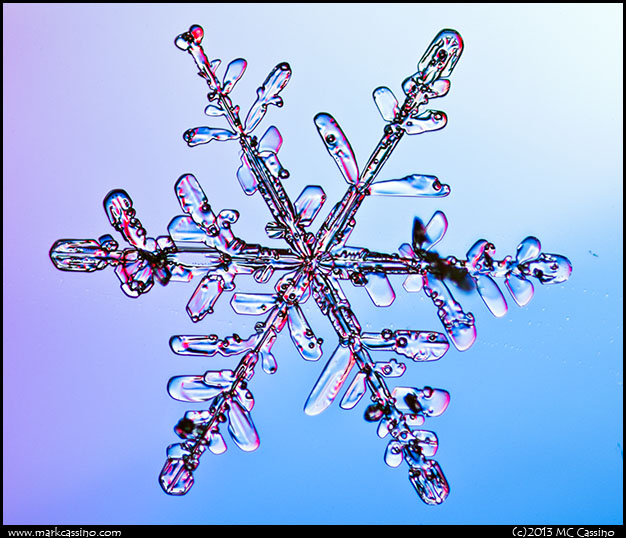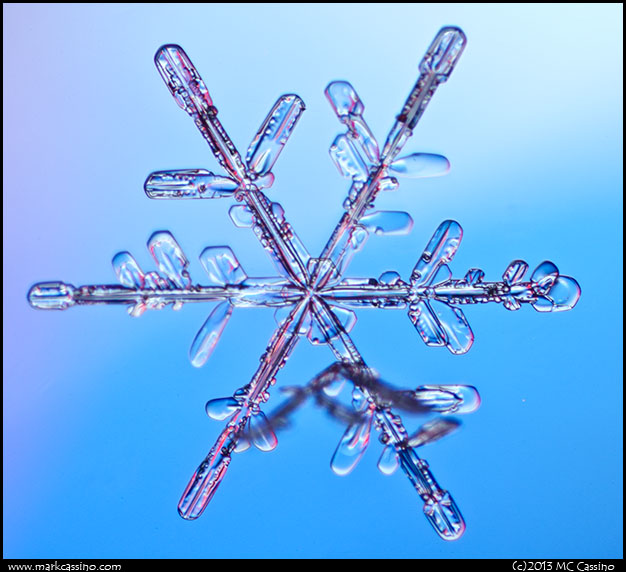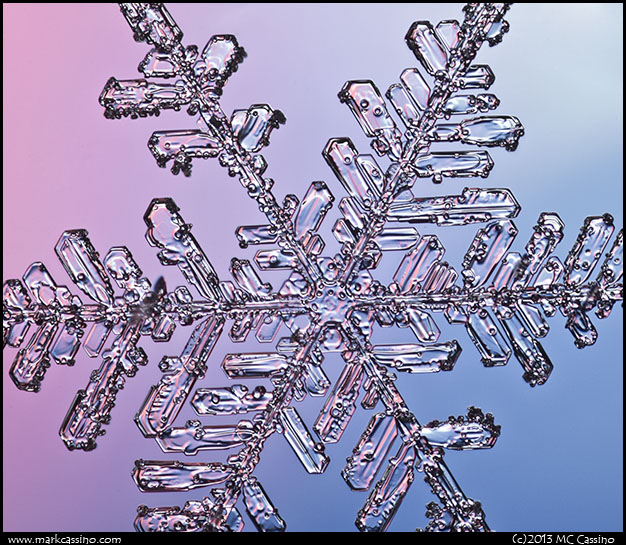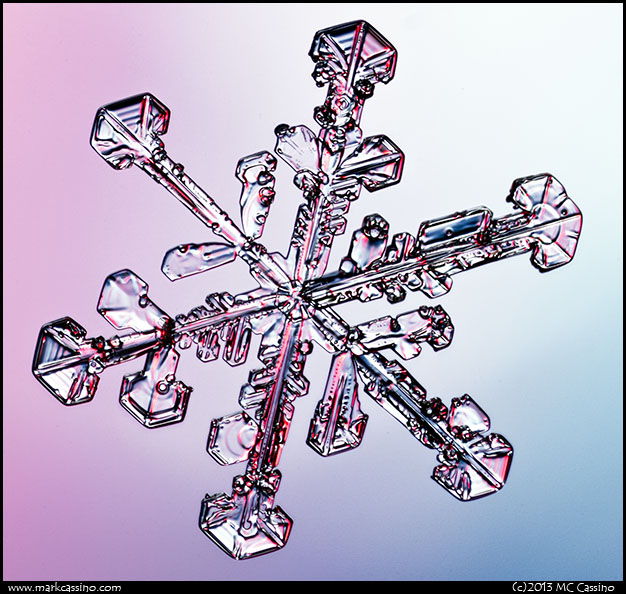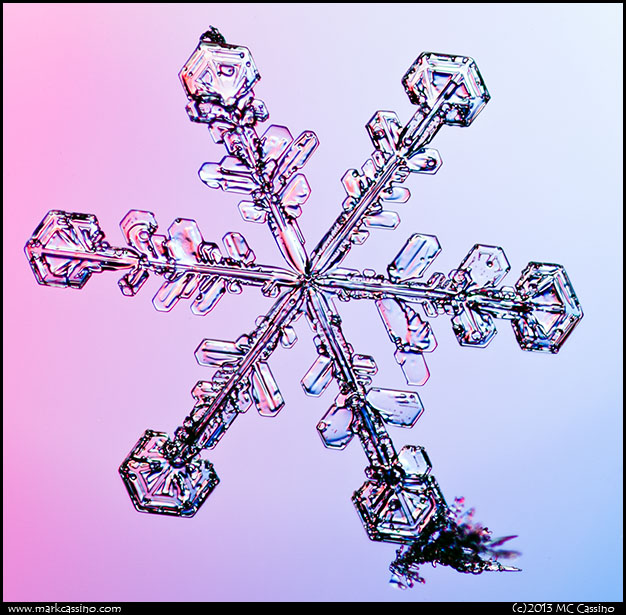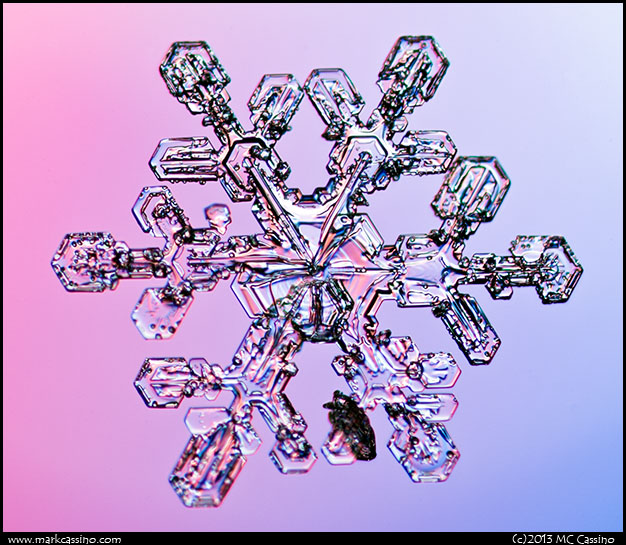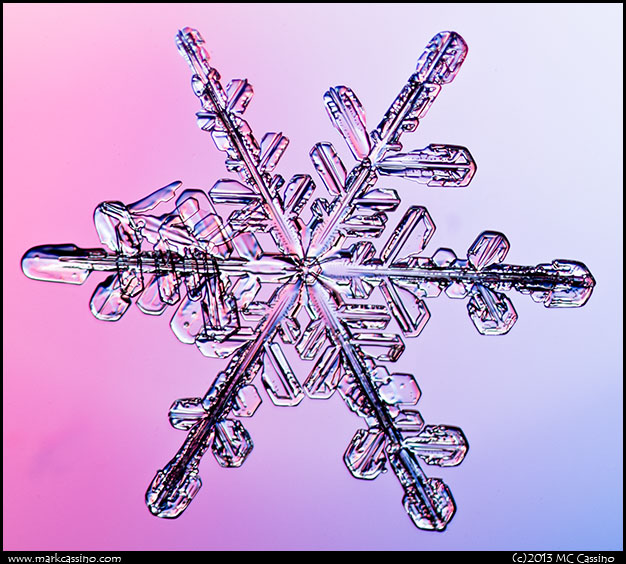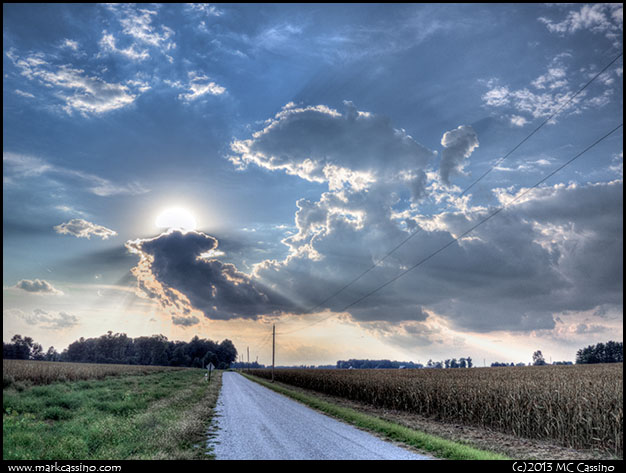Posted by mcc on Feb 11 2013 in Around The House
Posted by mcc on Feb 10 2013 in Snow Crystal Photography, Snowflake Photography, Pentax K-01
Here are some more snow crystals from last weekend, February 2-3, 2013. I’ve shifted to the Pentax K-01 exclusively for this work. The image quality is outstanding (same APS sensor as in the Pentax K5) and the focusing aids make it a breeze to get quickly get the crystals in sharp focus. I’ve also come to see just how much diffraction affects these shots - so no more stopping down past f8!
No cold weather snow is in the forecast so it might be a while before we have more snowflake photos:
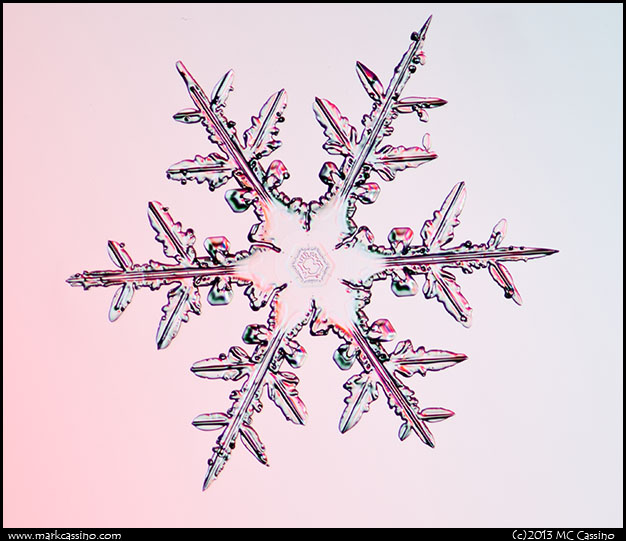
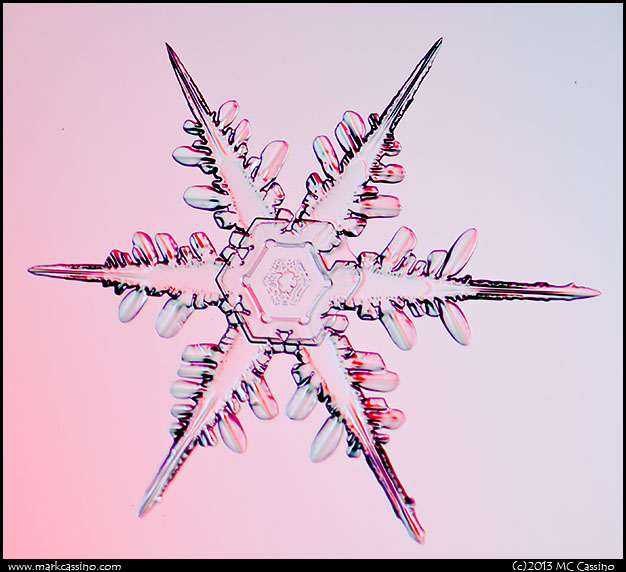
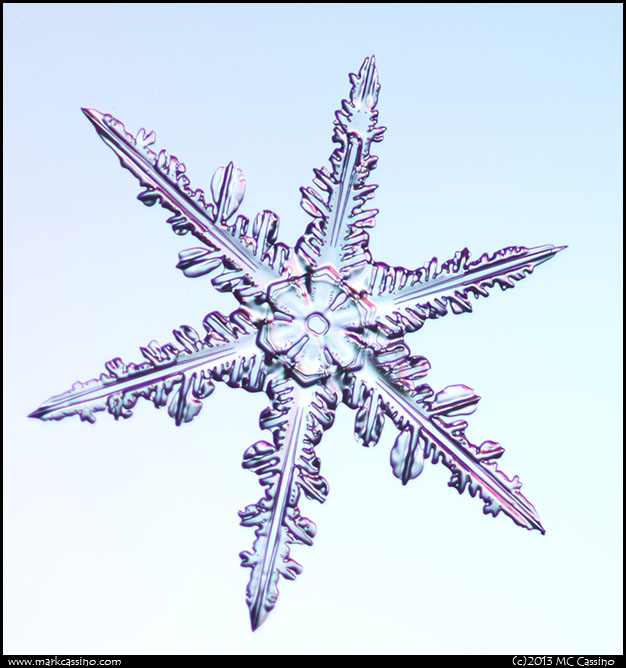
Posted by mcc on Feb 04 2013 in Snow Crystal Photography, Snowflake Photography
Posted by mcc on Feb 02 2013 in Snow Crystal Photography, Snowflake Photography
Here are a few more snow crystals shots - taken this morning (February 2). After a little bit of experimentation, I bought a Pentax K-01 mirrorless camera to use for snow crystals. Being able to focus using the screen on the back of the camera, aided by focus peaking and being able to magnify the image, is a tremendous boon. And the K-01 image quality is astoundingly good. It helped me have a very product morning! :D
Here are a few shots - more to follow in the next few days. Click an image for a larger file.
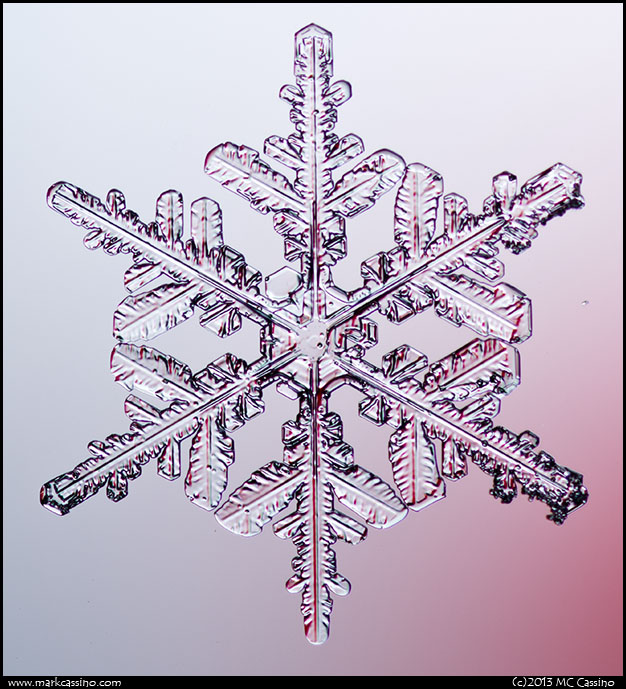
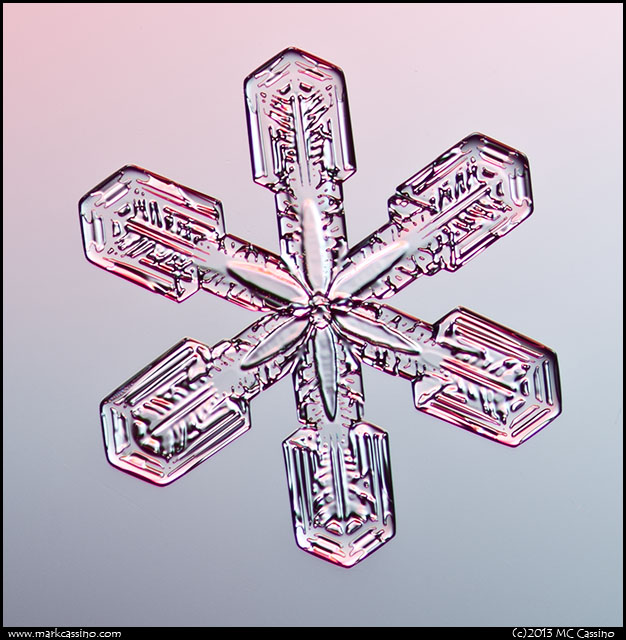
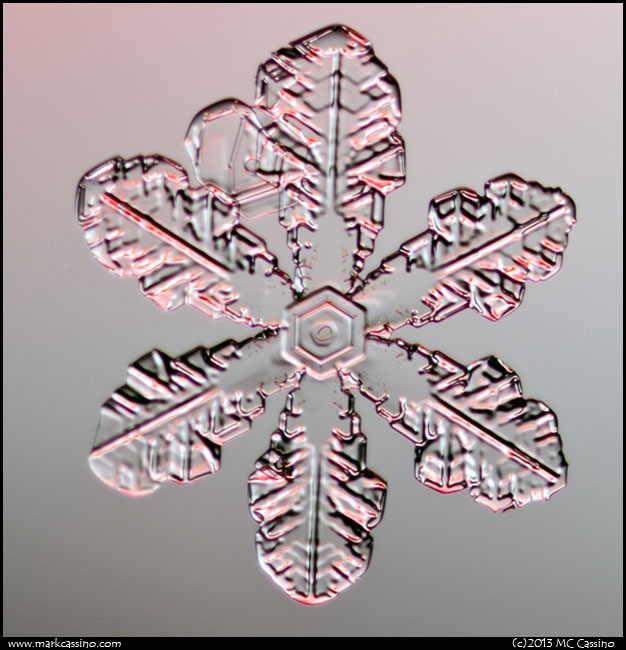

Posted by mcc on Jan 26 2013 in Snow Crystal Photography, Snowflake Photography, Pentax K5
Posted by mcc on Jan 20 2013 in Snow Crystal Photography, Snowflake Photography, Pentax Q
A few months ago I bought a Pentax Q system. While this camera is usually criticized for its very small sensor, I saw a tremendous opportunity for macro photography. I really enjoy the camera and use it for a wide variety of purposes with excellent results, but I have been hankering to try some snow crystal shots with it.
Why snow crystals? The sensor on the Q is a diminutive 6 x 4.5mm in size. A large snow crystal would be about that size, meaning that one could get a frame-filling snow crystal image (for a large crystal) at a simple 1:1 magnification, and smaller crystal could easily be photographed at 2:1. This makes for a much simpler setup than what is required for shooting snow crystals on an APS-C DSLR – where magnification needs to be 4:1 to 8:1. The Pentax Q is compatible with all my existing Pentax flash gear and focus peaking should simplify focusing. So I figure I’d give it a try.
So today, when it finally snowed, I tested the Q on my snow crystal macro setup. I usually use a reverse mounted 50mm macro lens (Sigma EX 50mm f2.8) on a bellows (135mm maximum) and extension tubes (180mm maximum). A flash is used to light the crystal from below. I decided to try the Q first with this setup, but just the lens and bellows. Due to how the bellows mount on the macro-focusing lens, they have to be extended to at least 48mm. So, here is a plastic ruler, the metric scale, taken with the Pentax Q and 50mm macro lens reverse mounted on a bellows extended to 48mm. As you can see, the frame covers less than 2 mm on the longer axis. That would be great for many snow crystal shots.
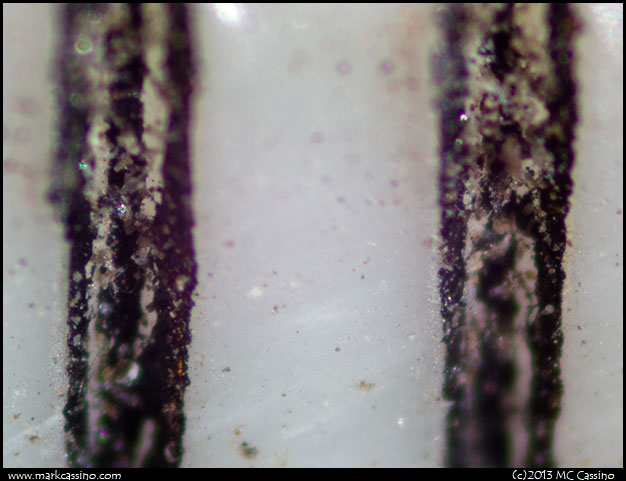
So here is one of my first shots. Not a pretty crystal, but the shot is clear enough:
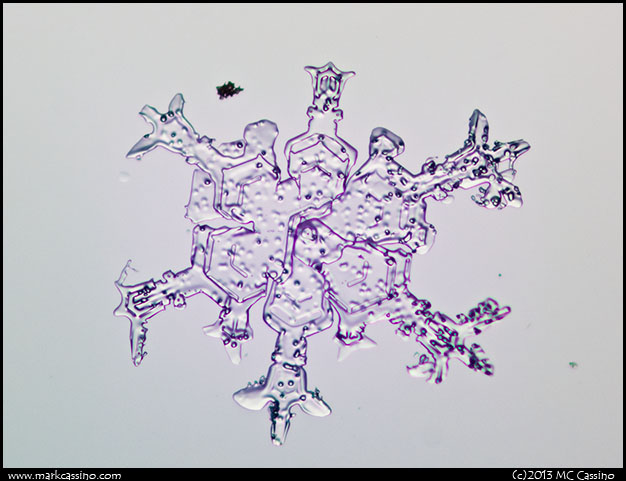
One of the problems I saw right off is that the flash stays in P-TTL mode, even though P-TTL needs access to the lens’s electronic data to function properly. I could not figure out how to get the flash into manual mode, so I just worked with it the old-fashioned way, and put a diffuser over it to manage the power level.
So here is another shot – even at the minimum magnification, the crystal was too big to fit in the frame:
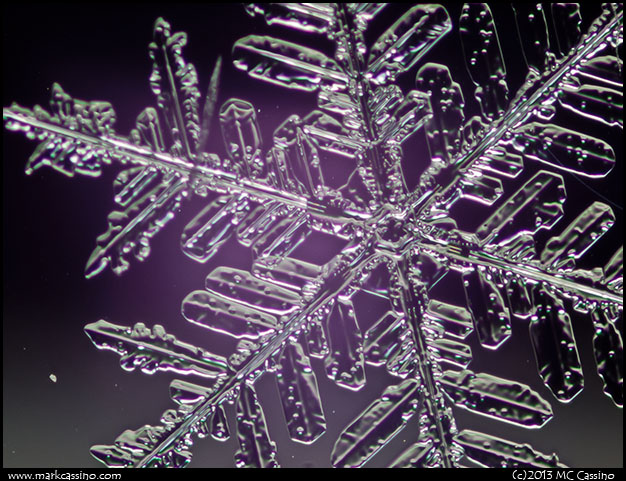
But… What’s that magenta rectangle in the middle of the shot? It can be minimized by desaturating the image, but I don’t like it. Here’s the desaturated image:
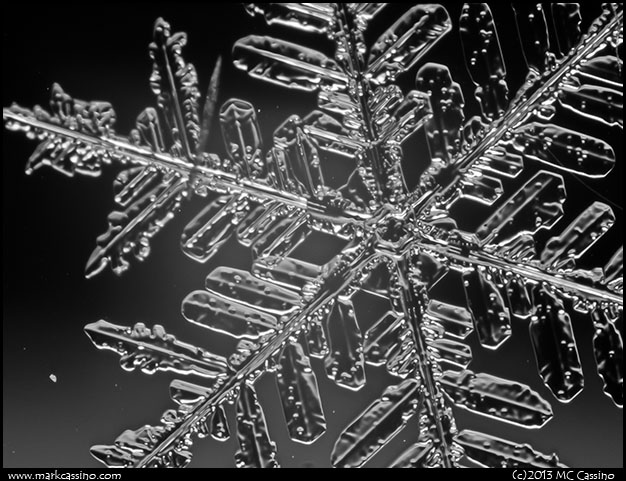
So… Plan B – skip reverse mounting and just use a macro lens mounted normally and shoot at 1:1 or 2:1. I tried the DA-F 100mm macro, but the working distances posed a problem with my tripod setup. So, back to the Sigma 50mm. The lens will go to 1:1 on its own and with a 25mm extension tube it will do 1.5:1. So I setup the Sigma 50 mm macro lens on a 25mm extension tube.
An early test - here again the crystal was larger than the 1.25:1 magnification that I had set up the lens for:
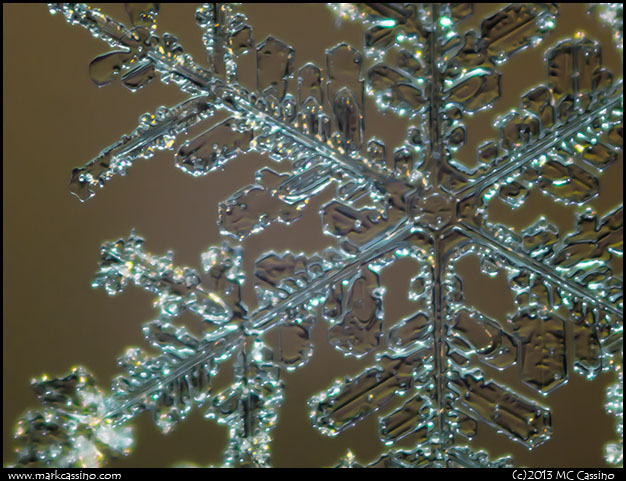
Here’s a very “fluffy” snow crystal lit by a flash from below and compact florescent lights from above:
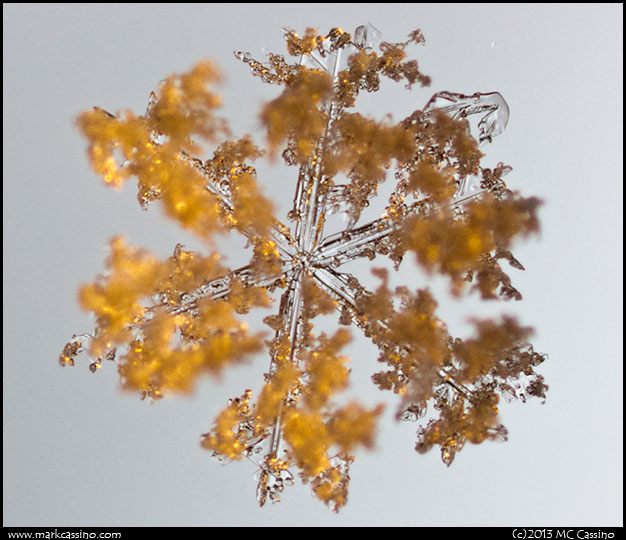
By this time the snow had stopped… So that was it for today’s experiment. I’ll continue working with the Q for this kind of photography – need to work out what is going on with the flash and test some other lenses. I guess that the magenta triangle was some sort of lens flare from the reverse mounted lens, but there is still a bit of it in the shots taken with the lens forward mounted. I have never seen that in shots taken with other cameras (I’ve used this setup with the *ist-D, K-10D, K-7 and K-5.)
As for noise – at ISO 160 there is very little noise. The advantages of the system way out weight the disadvantages.
More experiments to come - assuming it snows some more! At the end of the day, the grass is till poking out of the snow. Less than an inch fell today, but more is coming.
Posted by mcc on Jan 15 2013 in Announcements, Insect Photography, Landscape Photography, Film Processing, Pictures Of Trees, Midwestern Landscapes, Snow Crystal Photography, Snowflake Photography, Around The House, Infrared, Bird Photography, Allegan State Game Area, Allegan Forest, Dragonfly Photography, Macro Photography, Cat Photos, Infrared Converted Pentax KD10, Digital Infrared, Travel, Pentax K5
Folks on the PDML have been posting their 12 best shots of 2012 lately… I’m a little late and can’t say that these are my best shots, but they are my favorites for the year. To make it a baker’s dozen I added an older shot that I finally worked on enough to be happy with in 2012. So here are my 12 for 12 (click on images for a larger file): Snow Crystal (January, 2012):It barely snowed at all here in SW Michigan in 2012, but I managed one nice crystal shot in early January:

Spring Colors (March, 2012):Why wait for fall for foliage colors? Spring tree blossoms and buds captured on color film wiht the Pentax 6x7:

Around the House (April, 2012):My boy Jazz - psycho cat Qu’est-ce que c’est? Made with a Pentax LX and Kiron 105mm f2.8 macro lens on Fuji Neopan 400, rated at 400. Developed in D76 1+1.

Jumping Spider (May, 2012):Pentax K5 and A* 200mm macro:

Ebony Jewelwing (May 2012):A common but elusive damselfly. Pentax K5 and A* 200mm macro:

The Jewelbox, St. Louis, Missouri (June, 2012):Sort of a street photo. Infrared converted Pentax K10d:

Gateway Arch in Infrared (June, 2012):Speaking of St. Louis… note the troop of Boy Scouts in the lower left corner, best seen in the larger file.

Visitation #1… (April, 2012) If these photos were music they would be pop songs…. nothing wrong with that but sometimes you want to really rock out. So I started the Visitation Project in the spring of 2012. Pentax LX, Kiron 100mm macro, Neopan SS pushed to 200 and souped in D76 1+1:
Dashing Blue Dasher (August, 2012):Ever a favorite Dragonfly - the drought this year really hit the mid and late summer species, so the Blue Dashers hung around for a long time.

Finches and Thistle (August, 2012):I let a few bull thistles grow in my wildflower garden and the goldfinches loved them. Here’s one munching on the seeds. Pentax K5, A*400 f 2.8, SMC 1.7x AF converter:

Pastoral Scene (September, 2012):I traveled to central Indiana a lot in the last few months of the year and bought a Pentax Q kit in late August to take on the road with me. Marvelous camera - a shot from my tavels:

Autumn Colors (October, 2012):2012 brought a beautiful fall to West Michigan and I managed bump into it one October morning. Pentax K5 and DA 16-45 f 4 zoom:

Baker’s Dozen: The Shady SpotTaken in 2010 and worked on since then, I finally made a photo from this exposure that I like. I could say that I really like it. Pentax LX, fa 20-35mm F4 AL lens, Rollie 400 IR film, Hoya R72 filter.

Posted by mcc on Jan 13 2013 in Landscape Photography, Midwestern Landscapes, Travel, Pentax Q
